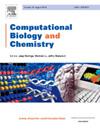Towards automated and reliable lung cancer detection in histopathological images using DY-FSPAN: A feature-summarized pyramidal attention network for explainable AI
IF 2.6
4区 生物学
Q2 BIOLOGY
引用次数: 0
Abstract
Medical image classification is critical for accurate disease diagnosis, necessitating models that balance performance and interpretability. This study presents Dilated Y-Block-based Feature Summarized Pyramidal Attention Network (DY-FSPAN), a deep learning framework designed for robust feature extraction and classification. The architecture incorporates Y-blocks and attention mechanisms to enhance spatial feature representation while maintaining receptive field coherence. The proposed model achieves a classification accuracy of 98.5 %, surpassing existing approaches such as convolutional block attention networks, adversarial learning models, and multi-output 3D CNNs. To validate the efficacy of DY-FSPAN, we conduct an extensive experiment, including comparative benchmarking against state-of-the-art methods, robustness assessments, and ablation studies. The model’s structural improvements are tested through various configurations to assess the impact of key components, confirming the contribution of attention mechanisms to performance enhancement. Grad-CAM analysis was employed to visualize learned feature maps, highlighting the model’s focus on diagnostically relevant regions, thereby improving trust in AI-driven medical decision-making. From an explainable AI perspective, the proposed framework achieves superior classification accuracy and enhances interpretability, addressing a crucial requirement in medical imaging applications. The qualitative and quantitative analyses demonstrate that DY-FSPAN effectively localizes disease-specific features, making it a suitable tool for clinical use. The findings suggest that integrating attention-based architectures with optimized feature selection can significantly advance automated medical diagnosis. The model’s ability to improve diagnostic reliability while maintaining transparency underscores its potential for real-world deployment in healthcare settings.
使用DY-FSPAN在组织病理学图像中实现自动化和可靠的肺癌检测:用于可解释人工智能的特征总结金字塔注意网络
医学图像分类对于准确的疾病诊断至关重要,需要平衡性能和可解释性的模型。本研究提出了一种基于扩展y块的特征总结金字塔注意力网络(DY-FSPAN),这是一种用于鲁棒特征提取和分类的深度学习框架。该建筑结合了y块和注意机制,以增强空间特征表征,同时保持接受野的一致性。该模型的分类准确率达到98.5 %,超过了现有的卷积块注意网络、对抗学习模型和多输出3D cnn等方法。为了验证DY-FSPAN的有效性,我们进行了广泛的实验,包括与最先进方法的比较基准,稳健性评估和消融研究。通过不同配置对模型的结构改进进行测试,以评估关键组件的影响,确认注意机制对性能提升的贡献。使用Grad-CAM分析将学习到的特征图可视化,突出模型对诊断相关区域的关注,从而提高对ai驱动的医疗决策的信任。从可解释的AI角度来看,所提出的框架实现了卓越的分类准确性并增强了可解释性,解决了医学成像应用中的关键要求。定性和定量分析表明,DY-FSPAN有效地定位了疾病的特异性特征,是一种适合临床使用的工具。研究结果表明,将基于注意力的体系结构与优化的特征选择相结合可以显著推进自动化医疗诊断。该模型在提高诊断可靠性的同时保持透明度的能力强调了其在医疗保健环境中实际部署的潜力。
本文章由计算机程序翻译,如有差异,请以英文原文为准。
求助全文
约1分钟内获得全文
求助全文
来源期刊

Computational Biology and Chemistry
生物-计算机:跨学科应用
CiteScore
6.10
自引率
3.20%
发文量
142
审稿时长
24 days
期刊介绍:
Computational Biology and Chemistry publishes original research papers and review articles in all areas of computational life sciences. High quality research contributions with a major computational component in the areas of nucleic acid and protein sequence research, molecular evolution, molecular genetics (functional genomics and proteomics), theory and practice of either biology-specific or chemical-biology-specific modeling, and structural biology of nucleic acids and proteins are particularly welcome. Exceptionally high quality research work in bioinformatics, systems biology, ecology, computational pharmacology, metabolism, biomedical engineering, epidemiology, and statistical genetics will also be considered.
Given their inherent uncertainty, protein modeling and molecular docking studies should be thoroughly validated. In the absence of experimental results for validation, the use of molecular dynamics simulations along with detailed free energy calculations, for example, should be used as complementary techniques to support the major conclusions. Submissions of premature modeling exercises without additional biological insights will not be considered.
Review articles will generally be commissioned by the editors and should not be submitted to the journal without explicit invitation. However prospective authors are welcome to send a brief (one to three pages) synopsis, which will be evaluated by the editors.
 求助内容:
求助内容: 应助结果提醒方式:
应助结果提醒方式:


